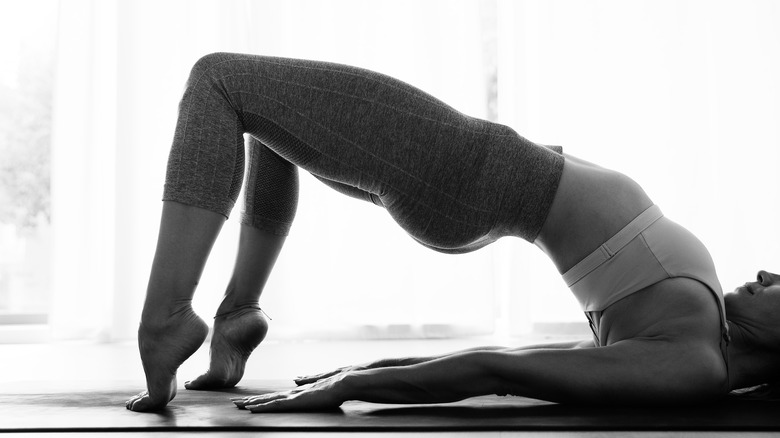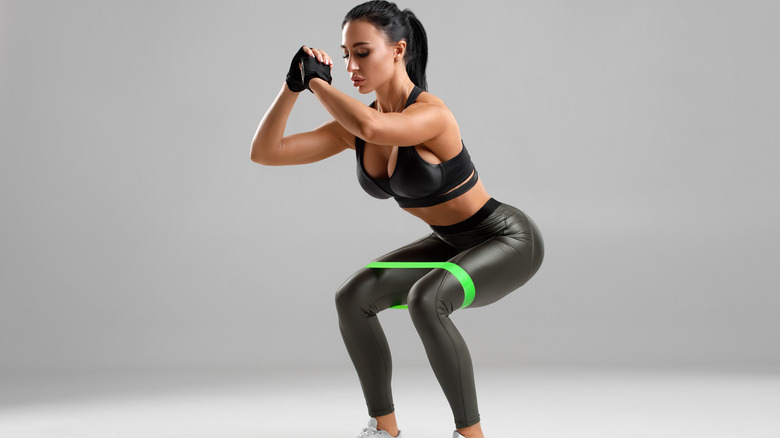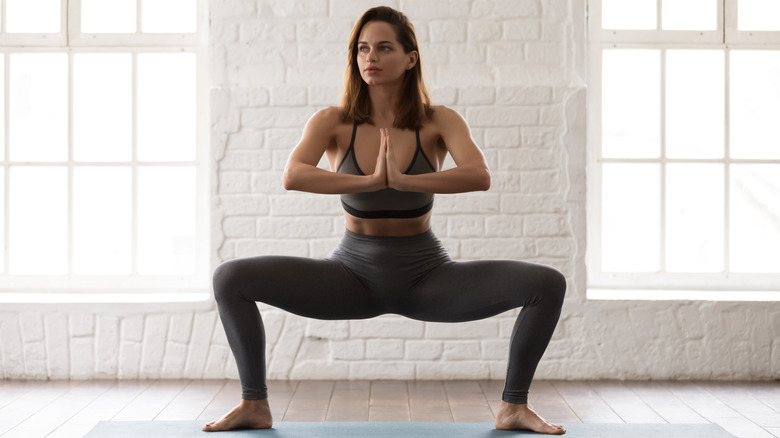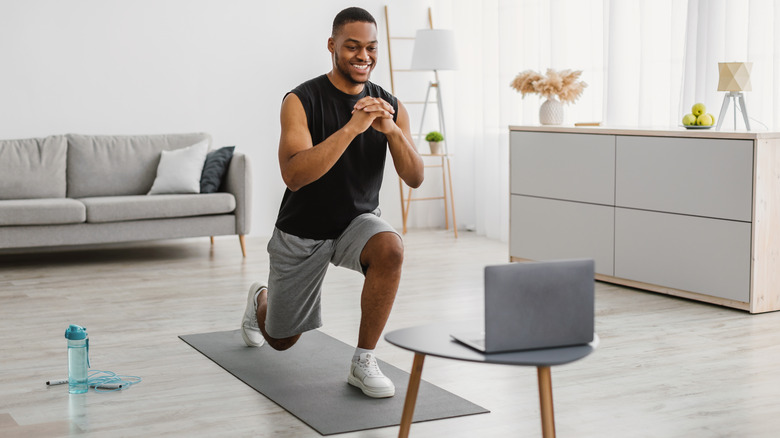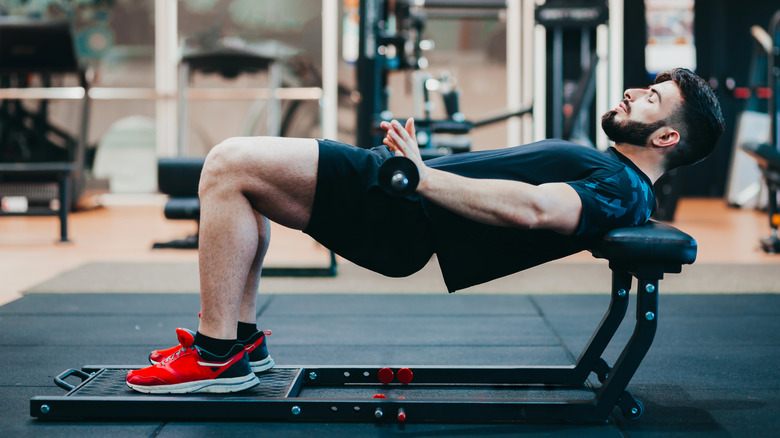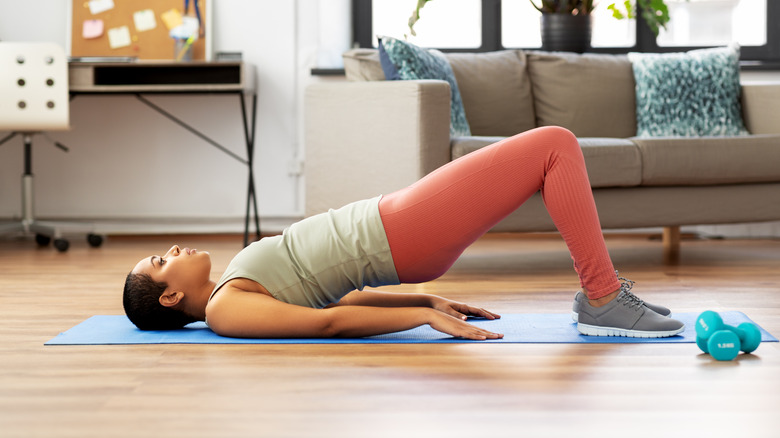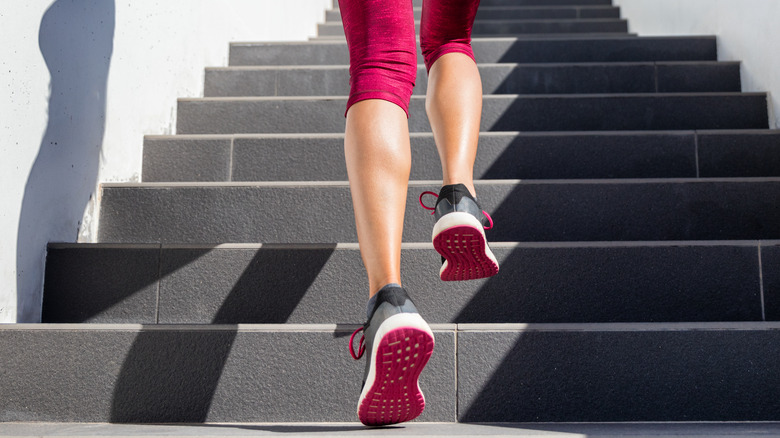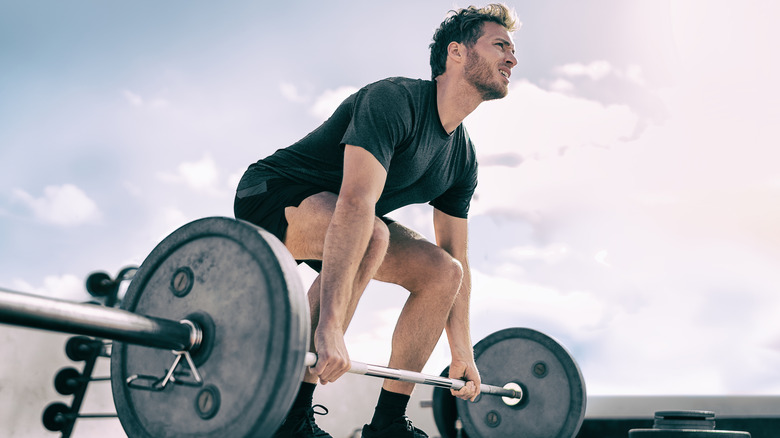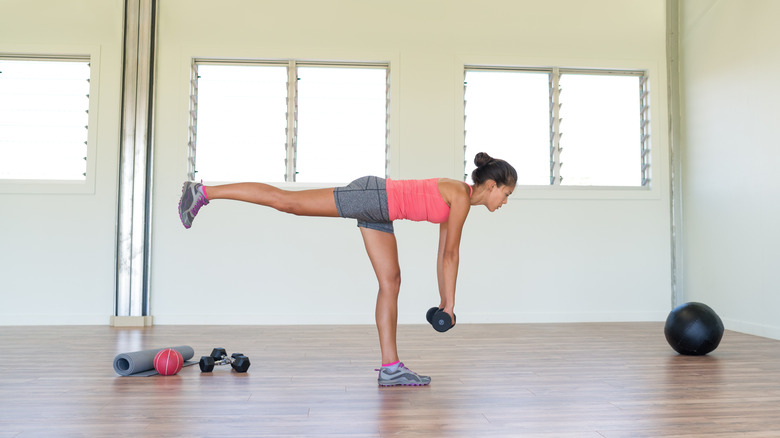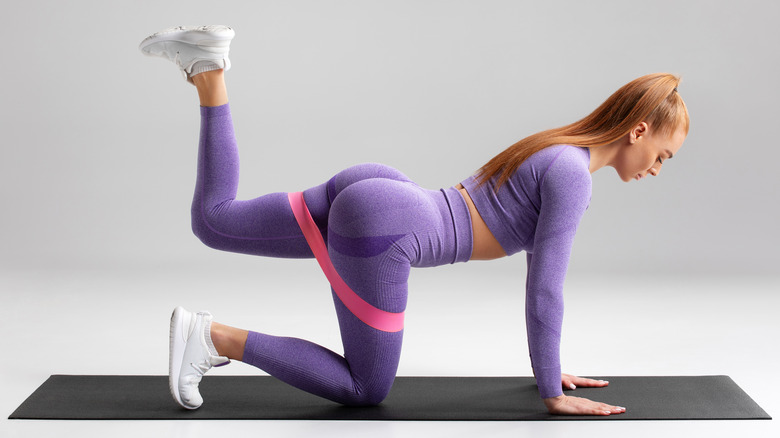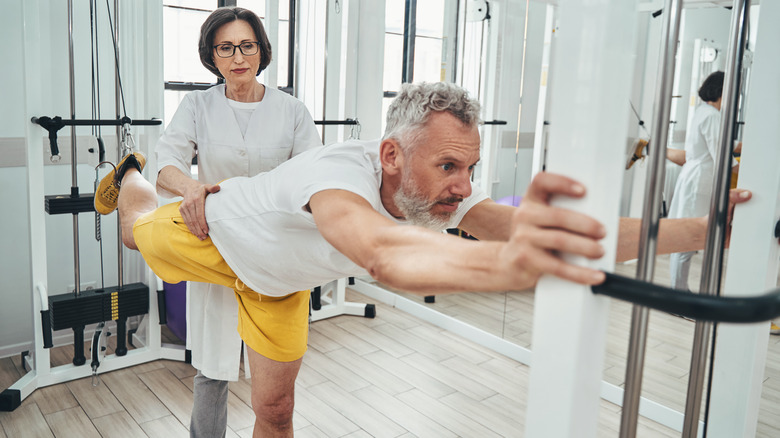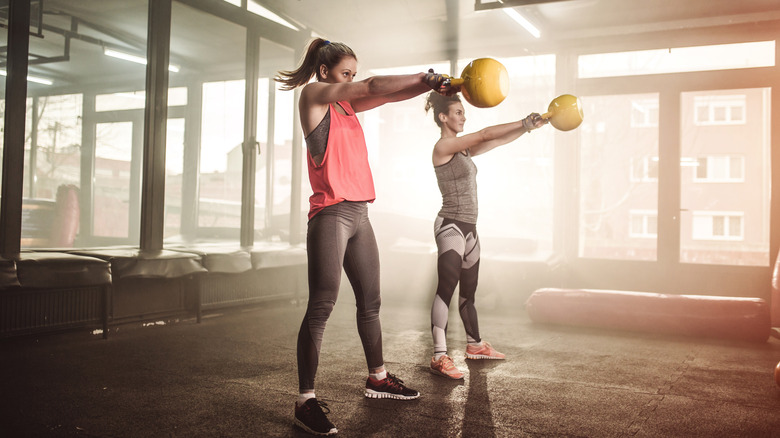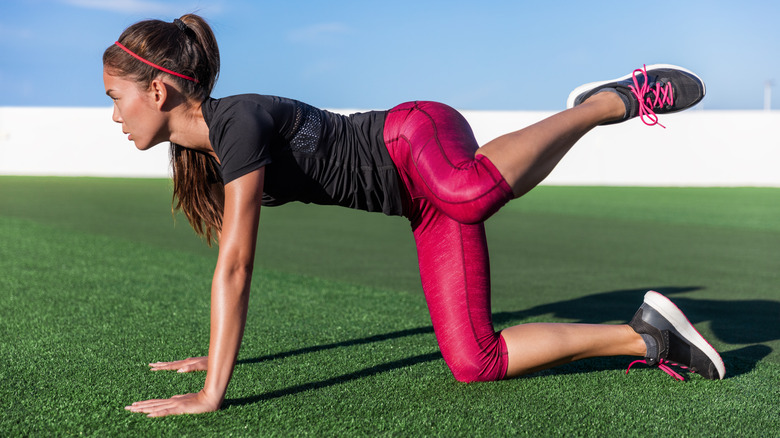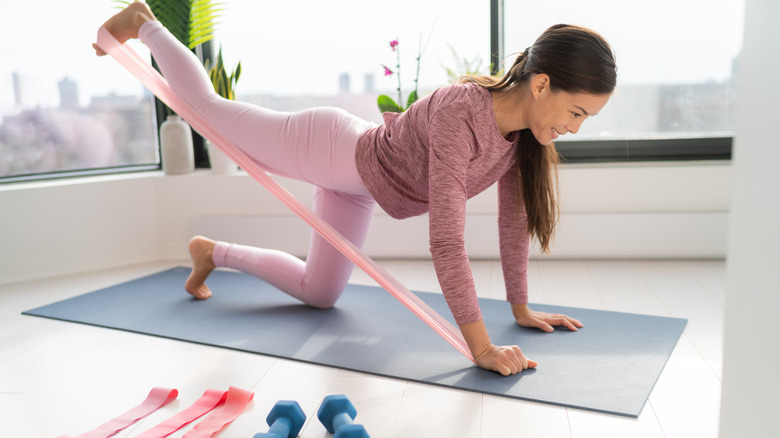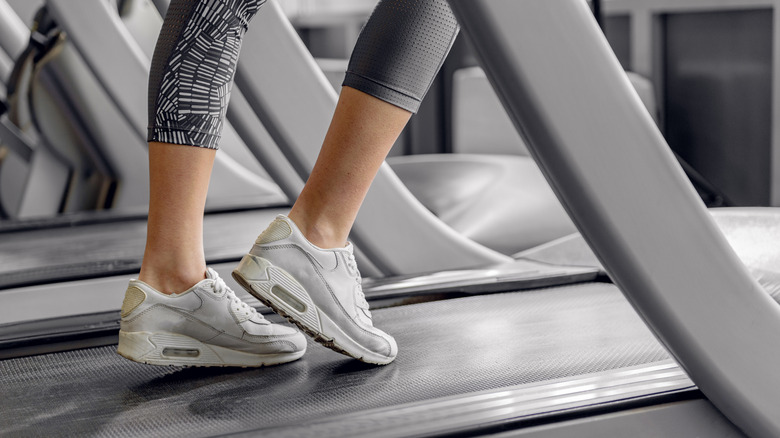The Best Exercises For Your Glutes
Glutes are one of the most important muscles of the body as they enable you to move your hips and legs, while stabilizing posture and maintaining balance. They become activated the moment you wake up and get out from your bed and are involved in practically every possible daily move — from when you're walking to your kitchen to picking something off the floor. Unfortunately, if your lifestyle is sedentary, your glutes become less active and weaker than they're supposed to be in order to protect your posture and spine.
Glutes are actually three different muscles on each buttock and they perform different functions. Gluteus minimus is the smallest and deepest of all three gluteal muscles and it has a role of allowing the abduction, external, and internal rotation of the thigh, as well as stabilizing your hips and the entire pelvic girdle during walking, running, or balancing on one leg.
Gluteus medius are middle-sized and enable hip abduction, lateral rotation, medial rotation, as well as side-to-side stability of the pelvis. And lastly, gluteus maximus, the biggest of the three gluteal muscles and one of the strongest muscles in the body has the main function of hip abduction and lateral rotation, as well as hip extension.
Squats
One of the most popular exercises for strengthening the glutes are squats. And even though studies of the basic squat have proven time and time again to be more than enough when it comes to glute activation, many variations have emerged over the years, helping isolate specific gluteal muscles and fatiguing them to their optimal failure — which, of course, leads to optimal strength.
Squats are actually functional movements you do on a daily basis, whenever you're sitting down and getting up, bending the knees and picking something up from the floor, or even crouching down in a grocery store aisle to read the label on the lowest shelf. However, performing squats as a glute-focused exercise helps strengthen and build all three of your gluteal muscles, according to a study conducted by the Journal of Strength and Conditioning Research.
It's important to know proper squatting form before performing them so you avoid injury and overstraining of the wrong muscles. Start in a standing position with feet a bit wider than hip-distance and toes slightly pointed outward. Activate your core muscles and, keeping your back straight, take a big inhale and bend your knees, trying to sit in an imaginary chair behind you. Make sure your knees are tracking your toes and aren't going inward, and aim for your thighs to be as parallel to the floor as possible.
Once you're in the lowest part of the squat, slowly start exhaling and extending your legs, squeezing your glutes at the top and performing a hip-tilt forward to further activate and fatigue your glutes.
Sumo Squats
There are many different variations of squats, but sumo squats may be the most important ones to mention as they specifically target your glutes. Basic squats work your hamstrings and quadriceps almost as much as your glutes, but sumo squats take them slightly out of the equation, allowing the glutes to fully take over. Again, form is extremely important as you don't want your lower back to pull more than it should, potentially risking injury and back pain.
Start in a standing position, feet wider than hip-width apart, feet and toes opened to a 45-degree angle. Keep your chest up, back straight, and core activated. Inhale and slowly lower into a squat, keeping your upper body in the same form. Aim for thighs parallel to the floor and allow your knees to spread out. At the end of your inhale, begin to exhale and extend your legs, squeezing at the very top and adding the pelvis tilt if it feels good.
Lunges
Lunges are another popular leg-day exercise; they have also gone through a large number of varieties that isolate and activate specific gluteal muscles more than others. Still, the simple forward lunge, reversed lunge, and lateral lunge are more than enough to really work your glutes.
For all three basic lunge variations, start in a standing position with your feet squared and hip-width apart. Keep your core active and your back straight throughout the entire movement, avoiding any sudden movements or jumps.
To execute forward lunges, inhale and step with one of your legs far in front of you, shifting the weight forward so you feel your heel hit the floor first, followed by your entire foot. On your exhale, push yourself away from the front heel to drive back up to starting position. Repeat with the other leg.
Reversed lunges start with an inhale and a big step backward, maintaining a straight spine and squared hips. This time, your feet will hit the floor first and your heel will stay up. On the exhale, push yourself away from the back toes and drive back up to starting position. Control the movement with your core muscles and avoid the jerk in your lower back once you start pushing yourself away from your back leg. Repeat with the other leg.
Next, we have lateral lunges which take you to the side, stepping far away while keeping your feet squared and lowering your hips into a squatting position. Drive back up with a controlled push.
Hip Thrusts
Gymgoers absolutely adore this glute exercise as it isolates the glutes and prevents your quads and hamstrings from taking over and doing most of the work. They aren't the easiest or most comfortable to set up, but experts agree that hip thrusts are one of the best exercises for strengthening and adding size to your glutes.
Hip thrusts can be performed in a plethora of ways, but the most common include using a barbell, a heavy dumbbell or a heavy plate on your lap. When setting up, you'll need a bench or another elevated and steady surface with enough space for your upper body to basically lie on it. Place your back on the elevated surface and your feet in front of you, hip-width apart and knees bent. The height of the elevated surface should be just below your shoulder blades.
Inhale, keep your chin tucked, and on your exhale, dig your feet into the floor, lifting your hips so your thighs can become parallel to the floor. Squeeze your glutes at the top and the end of your exhale. On your next inhale, slowly come back to starting position and go again.
Glute bridges
Similar to hip thrusts, glute bridges isolate your gluteal muscles better than most compound movements. They are also easier to perform than hip thrusts as no special setup is needed. That's why they are safe to perform, from beginners to enthusiasts at any age — a trainer, however, can help you develop proper technique with any of these exercises.
Start in a lying position on a comfortable surface like a yoga mat and bend your knees, placing your feet flat on the floor, roughly one foot away from your sitting bones. Keep your feet hip-width apart and try to avoid spreading your knees as you begin lifting your hips. Inhale, brace your core, and on your exhale, dig your feet into the ground and lift your hips as far as they can go, squeezing your glutes at the top.
On your next inhale, slowly lower your hips to starting position before extending them again. You can easily perform glute bridges without any equipment, or challenge yourself with resistance bands, heavy dumbbell, or even a medicine ball. Additionally, you can take it a step further and when you reach your full extension, lift your heels to fatigue your glutes even more — or try lifting one leg into the air, leaving all the pressure on one buttock.
Step-Ups
Here's another great exercise that tackles the gluteal muscles and isolates them to the best of their ability. Step-ups are easy to perform any place, anytime — all you need is an elevated and sturdy surface. The higher the object you're stepping on, the bigger the challenge. So, if you're just beginning, start with a low step or bench before experimenting with higher boxes or other objects.
Stand in front of the elevated surface, feet together or hip-width apart, and core activated. You can choose to use only your bodyweight or add some dumbbells or kettlebells into each arm — the extra weight will depend on your level of expertise. Inhale and on your exhale, step with one foot on the elevated surface, feeling the activation of the glutes. You can bring your other foot to join before stepping back down and repeating on the other side, or you can take it further by bending the knee of the elevated leg and bringing it toward your chest. This allows for you to really squeeze the glutes at the top of your move, activating them even more.
Deadlifts
Deadlifts are another compound movement that works your entire body, from top to bottom, according to a study conducted by the Journal of Strength and Conditioning Research. The focus is on your entire posterior chain and they really work your glutes, hamstrings, and lower back. Unfortunately, deadlifts are also one of the most common exercises to cause injury as the lower back often takes over, causing strain and pinched nerves.
Start in a standing position, feet hip-width apart and facing straight in front of you. Keep your chest elevated and back straight throughout the entire movement. Inhale and bend your knees, picking up the weight from the floor. On your exhale, dig your heels into the ground, activate the glutes, and push the ground away from you, extending your legs and coming back up to starting position. Keep your arms straight and the weighted object close to your legs as you're extending, almost as if you're tracing your legs with it — from the floor over the shins and thighs — and stopping right in front of your hip.
There are many variations of deadlifts, but the basic one maintains to be one of the most important compound movements that target your gluteal muscles.
Single-Leg Deadlift
Although the basic deadlift is plenty by itself, isolating one leg allows for an even stronger activation of the gluteal muscles and hamstrings. It's also very challenging for your balance, so make sure to have a steady surface next to you that you can hold on to if you start toppling to the side.
Start in a standing position next to a steady surface like a wall, column, or a railing. Grab a kettlebell or dumbbell with one hand and lift the same-side leg, bending the knee behind you. Keep your spine straight and slightly bend the knee of the standing leg so you avoid locking it out and injuring it. Inhale and slowly drop your weight toward the floor, bending forward and trying to keep the standing leg as straight as possible, but also maintaining a "soft bend in the knee."
On your exhale, dig your foot into the ground and lift the weight back to starting position. This is the part where you might need to hold on to that wall for extra support in order to avoid collapsing your knee. Repeat on the other side.
Donkey Kicks
Donkey kicks isolate your glutes while allowing you to play with the number of reps that will burn your muscles. Start in an all-fours position on the floor, palms right under your shoulder and knees under your hips. Activate your core to straighten your back and push the ground away from you so you can feel the space in between your shoulder blades expand.
Take an inhale and on your exhale, lift one of your legs up, keeping the knee bent and flexing your foot like you're trying to position it flat on the ceiling. Squeeze your glute at the very top and on your inhale, bring the knee back to starting position. You can continue with the same leg or alternate, squeezing hard with each kick. Additionally, you can stay in your highest position and perform small pumping movements that burn and fatigue your gluteal muscles to failure.
You can perform donkey kicks without any additional equipment — or challenge yourself by wrapping a resistance band around your thighs and feet.
Cable Kickbacks
Even though it's called cable kickbacks, this glute-building exercise can be performed with just a resistance band looped around your thighs. It isolates your glutes with each kick while the cables add weight and allow you to hold on to the steady pole, avoiding potential injury or lower back strain.
If performing on the cable, you're usually going to need an ankle strap that will be connected to the cable machine. Stand in front of the machine, feet hip-width apart. Hold on to the pole as you lift one of your legs and kick back, feeling the burn in both of your glutes. You can do this explosively or slow and controlled, depending on your level of expertise and confidence.
Alternatively, loop a resistance band around your thighs and hold on to a steady surface. Kick back just like you would on a cable machine.
Kettlebell Swing
This explosive move focuses on the glute squeeze, fatiguing and building your muscles with each swing. It's also extremely important to perform with proper form as doing it wrong can cause lower back pain and injury.
Start in a standing position with your feet slightly wider than hip-width distance. Your toes can face forward or be slightly open. Grab a kettlebell and extend your arms, letting it dangle down the center of your body. Inhale and bend over, slightly bending the knees and allowing the kettlebell to naturally sway back and underneath your body. On your exhale, extend your legs and explosively swing the kettlebell in front of you, lifting it up in line with your eyes. Squeeze your glutes at the top of the swing, feeling the move come straight from your hips and glutes.
Inhale and drop the kettlebell back, playing into gravitational forces, letting it naturally drop back before you explosively swing it forward again.
Fire Hydrants
One of the best exercises to isolate your gluteus medius, fire hydrants are easy to perform pretty much anywhere. All you need is a tiny bit of space on the floor and you can work on strengthening and building your glutes. Begin by setting up on all fours — palms right under your shoulders and knees right under your hips. Activate your core and push the ground away from you, feeling the space in between your shoulder blades expand.
Inhale and on your exhale, lift one of your legs to the side, keeping the knee bent and trying to avoid lifting the hip too much. Feel the squeeze at the top of your exhale and on your next inhale, bring down to starting position. You can continue lifting the same leg or alternate but make sure your hips aren't moving around too much. Additionally, you can spice it up by lifting your leg and holding at your highest level, performing little pulses up and down to burn out the muscle.
Fire hydrants are plenty just by themselves, but you can intensify the exercise by adding resistance bands around your thighs.
Best Equipment for Strengthening the Glutes
Although most of these exercises can be performed without any equipment, they can all be intensified with some additional resistance, whether in the form of a band or added weight. Some of the most commonly used exercise tools include different resistance bands (long, short, think, thick, booty bands), dumbbells, kettlebells, barbells, weight plates, medicine balls, large exercise ball, ankle straps, ankle weights, or a variety of specialty-designed gym machines that tackle and isolate specific muscles in the best way possible.
Still, you are more than capable of having an effective workout without any of these additions. They are simply easy and fun to use when you feel like you want to take your workout to the next level, causing your glute muscles to do even harder work. Before you kick it up a notch by using these tools, always make sure your form is on-point and that you can easily perform the exercise using just your body weight.
Other Activities to Increase Glute Strength
In addition to these amazing glute-building exercises, there are other activities that help increase the strength of your glutes, as well as legs. Incline walking puts a lot of pressure on the posterior chain, making you focus on performing long strides and driving the legs behind the hips so you get the full extension. Your workout can be less or more challenging depending on the incline percentage — and if you'd rather do this one outside, a hill can be just as effective.
Cycling and bike riding activate predominantly your quads, but also your glutes — especially when you're about to rise from your saddle and conquer a hill. Whether you cycle outside or inside, trust us when we say: Your glutes will burn, depending on the intensity of your workout. As a final note, walking also activates the glutes and can tone and strengthen these muscles. Your glutes really are part of basically every activity you perform on a daily basis, even without being intentional about it.

